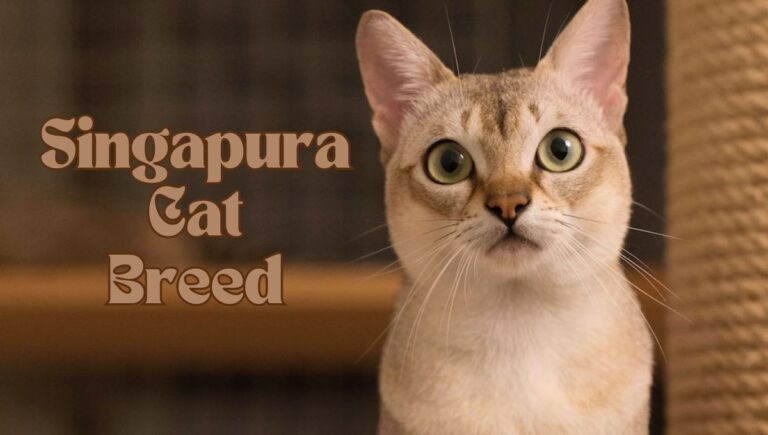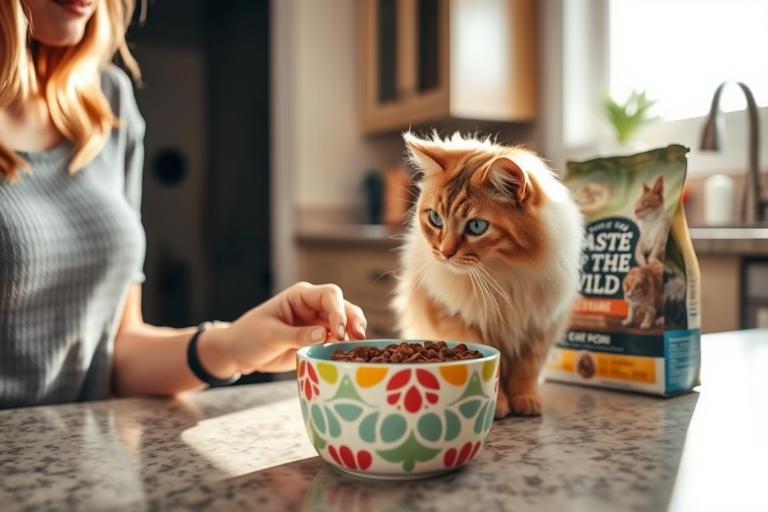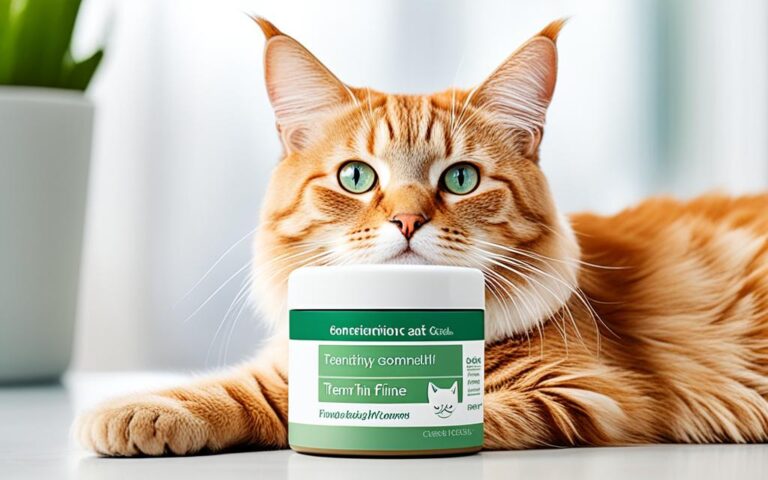Sokoke Cat Breed
The Sokoke cat breed is a rare and fascinating feline originating from the coastal forests of Kenya. Renowned for its striking, wild appearance and energetic personality, the Sokoke cat is a natural beauty with a distinctive, marbled coat pattern reminiscent of tree bark, which provides excellent camouflage in its native habitat. This breed’s short coat is easy to maintain, with minimal grooming required.
Sokokes are medium-sized cats, possessing a lithe, muscular build that speaks to their agility and hunting prowess. They have almond-shaped eyes, typically amber or green, which convey a keen intelligence and alertness. Their ears are moderately large, enhancing their attentive expression.

Temperament-wise, Sokoke cats are highly active and playful, often engaging in climbing and exploring. They are known for their sociability and strong bonds with their human companions, displaying a mix of independence and affection. While they are generally friendly with children and other pets, their spirited nature requires ample stimulation and interaction to keep them content.
Despite their wild origins, Sokoke cats adapt well to domestic life, provided they receive plenty of exercise and mental engagement. Their unique history and captivating looks make them a cherished choice for cat enthusiasts seeking an exotic and dynamic pet.
Table of Contents
I. Origin and History of Sokoke Cats :
Origins and Historical Significance :
- Discovery: Found in the late 1970s by Jeni Slater, a wildlife artist, on her coconut plantation in Kenya.
- Initial Breeding: Jeni Slater began breeding the wild-looking kittens she found.
- Introduction to Europe: Slater sent two cats to Gloria Moeldrup in Denmark, who continued the breeding program and introduced the Sokoke cat to the international feline community.
Geographical Region of Origin :
- Location: Arabuko-Sokoke Forest on the eastern coast of Kenya.
- Environment: Dense, indigenous forest providing a unique ecosystem.
- Adaptations: Marbled coat pattern for camouflage, lithe and muscular build for agility in the forest.
Influence on Characteristics :
Physical Attributes:
- Strong, athletic build.
- Short, easy-to-maintain coat resembling tree bark.
Behavioral Traits:
- High intelligence and alertness.
- Energetic and highly active.
- Adaptability to both wild and domestic environments.
Folklore and Legends :
- Local Recognition: Known to the Giriama people, an ethnic group native to the Arabuko-Sokoke region.
- Cultural Significance: Part of the local ecosystem and culture, though not heavily mythologized.
- Mystique: Their wild appearance and remote habitat add an element of intrigue and legend.
The Sokoke cat’s journey from the wild forests of Kenya to homes around the world highlights not only their adaptability but also the efforts of dedicated breeders to preserve this unique and exotic breed. Their distinctive traits and fascinating history make them a cherished addition to the feline world.
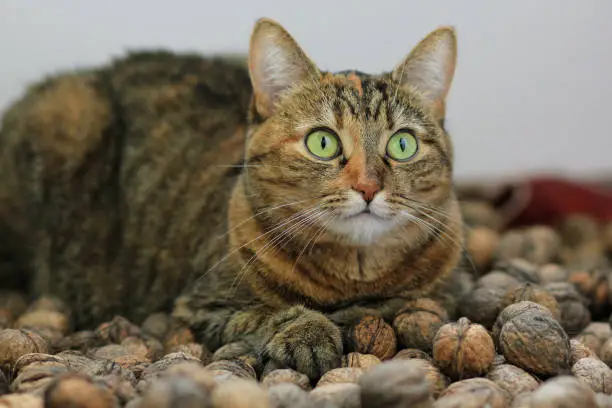
II. Physical Characteristic of Sokoke Cats :
| Height | Medium-sized, typically standing around 8-10 inches (20-25 cm) at the shoulder. |
| Weight | Males usually weigh between 7-11 pounds (3-5 kg), while females range from 6-9 pounds (2.5-4 kg). |
| Life Span | The average lifespan is 12-15 years, provided they receive proper care and maintain a healthy lifestyle. |
| Good With | Sokoke cats are well-suited for families with children and can get along with other pets, including dogs and other cats, when properly socialized. |
| Temperament | They are affectionate and sociable with their human companions. Energetic and playful, Sokoke cats require regular interaction and mental stimulation. While they are independent, they enjoy attention and engaging activities. |
| Intelligence | Sokoke cats are highly intelligent and curious. They are quick learners, capable of understanding commands and tricks. They enjoy puzzle toys and interactive play to keep their minds stimulated. |
| Shedding Amount | They have a low to moderate shedding amount. Their short coat requires minimal grooming. |
| Grooming | Low maintenance; weekly brushing is usually sufficient to keep their coat healthy. Regular nail trimming, dental care, and occasional ear cleaning are recommended. |
| Exercise Needs | Low maintenance; weekly brushing is usually sufficient to keep their coat healthy. Regular nail trimming, dental care, and occasional ear cleaning are recommended. |
| Energy Level | Sokoke cats have a high energy level and are very active and playful. They require ample space and opportunities for physical activity. |
| Meowing Level | Sokoke cats have a moderate meowing level, using vocalizations primarily to communicate with their owners without being overly vocal. |
| Drool amount | Very low drool amount; not typically a drooling breed. |
| Coat Length/Texture | Their coat is short, sleek, and glossy, resembling the texture and appearance of tree bark, which aids in camouflage. |
| Colors | Typically found in shades of brown, often with a marbled or mottled appearance. |
| Patterns | They exhibit distinctive marbled or blotched tabby patterns, which provide excellent camouflage in their natural forest habitat. |
Size :
Sokoke cats are medium-sized felines.
- Males: Typically weigh between 7-11 pounds (3-5 kg).
- Females: Usually range from 6-9 pounds (2.5-4 kg).
- Height: Both males and females generally stand around 8-10 inches (20-25 cm) at the shoulder.
Coat Type and Colour Variations :
- Coat Length/Texture: The Sokoke has a short, sleek coat with a glossy texture. The coat is tightly fitted to the body, providing a streamlined appearance.
- Color Variations: The coat is predominantly found in shades of brown, featuring a marbled or mottled appearance. The distinctive marbled tabby patterns resemble the bark of trees, offering excellent camouflage in their natural habitat.
- Patterns: The marbled pattern is the most common, showcasing a unique and striking blotched tabby design that sets the breed apart.
Distinctive Features :
- Ear Shape: The ears of the Sokoke cat are moderately large, upright, and slightly rounded at the tips. They are set well apart and add to the cat’s alert and attentive expression.
- Tail Characteristics: The tail is medium in length, slender, and tapers to a rounded tip. It is often carried upright, accentuating the cat’s lively and active demeanor.
- Unique Physical Traits: One of the most distinctive physical traits of the Sokoke is their lithe and muscular build. This athletic physique highlights their agility and climbing prowess, attributes that are essential for their survival in the wild. Their almond-shaped eyes, typically amber or green, convey a keen intelligence and alertness, further emphasizing their wild heritage. The Sokoke’s natural marbled coat pattern and wild look make them stand out among other cat breeds, embodying a blend of natural beauty and raw athleticism.
Overall, the Sokoke cat is a unique and captivating breed, known for its striking appearance and dynamic personality. Their physical characteristics not only reflect their wild origins but also contribute to their charm and appeal as a companion animal.
III. Temperament and Personality of Sokoke Cats :
Typical Temperament and Personality Traits :
General Demeanor:
The Sokoke cat is known for its energetic and lively personality. These cats are highly active and require plenty of physical and mental stimulation. They are very playful and enjoy interactive games and activities that engage their agile bodies and sharp minds.
Friendliness and Sociability:
Sokokes are affectionate and develop strong bonds with their human companions. They are sociable cats that enjoy the company of their family members and are typically good with children and other pets when properly socialized. Despite their independent streak, they seek out attention and enjoy spending time with their owners.
Common Behavioral Traits :
Positive Traits:
- Active and Playful: Sokokes are very active and thrive on playtime and exploration. They love to climb and often seek out high places to perch and observe their surroundings.
- Intelligent and Curious: These cats are highly intelligent and curious, often figuring out how to open doors or solve puzzle toys.
- Affectionate: They are affectionate towards their owners and enjoy being part of the household activities.
Challenging Traits:
- High Energy: Their high energy levels mean they need plenty of exercise and stimulation. Without enough activity, they can become bored and potentially destructive.
- Independent: While they are affectionate, Sokokes also have an independent side and may not always seek constant attention.

Advice on Managing and Addressing Breed-Specific Behavioral Issues:
- Provide Ample Exercise: Ensure that your Sokoke gets plenty of physical exercise. Provide climbing structures, interactive toys, and engage in regular play sessions to keep them active and entertained.
- Mental Stimulation: Incorporate puzzle toys and activities that challenge their intelligence. Rotate toys regularly to keep them interested and engaged.
- Socialization: Early and consistent socialization is key. Introduce them to different people, pets, and environments to ensure they are well-adjusted and sociable.
- Create a Safe Environment: Since they love to climb and explore, make sure your home has safe spaces for them to satisfy their climbing instincts, like cat trees or shelves.
- Attention and Affection: Balance their independent nature with plenty of affection and interaction. Spend quality time with your Sokoke to strengthen your bond and provide the social engagement they need.
By understanding and addressing the specific needs of the Sokoke cat breed, owners can ensure a harmonious and fulfilling relationship with their active and intelligent feline companion.
IV. Care and Maintenance of Sokoke Cats :
Grooming Needs :
- Short, sleek coat requires minimal grooming
- Weekly brushing to keep coat healthy and free of loose hair
- Low shedding breed
- Regular grooming sessions help check for skin issues or parasites
- Additional grooming tasks:
- Regular nail trimming
- Dental care (brushing teeth)
- Occasional ear cleaning
Health Consideration :
Sokoke cats are generally healthy, but regular veterinary check-ups are essential to monitor their health and catch any potential issues early. Key health considerations include:
- Vaccinations: Keep up with the recommended vaccination schedule to protect against common feline diseases.
- Parasite Control: Regularly treat for fleas, ticks, and worms as part of their preventive health care.
- Dental Care: Good oral hygiene is crucial. Regular teeth brushing and dental check-ups can help prevent periodontal disease.
- Spaying/Neutering: Spaying or neutering your Sokoke can prevent certain health issues and unwanted behaviors.
- Genetic Health Issues: While Sokokes are generally robust, it’s important to be aware of any breed-specific health concerns. Regular screenings and a proactive approach to health can help manage these risks.
By addressing the grooming, exercise, nutritional, and health needs of the Sokoke cat, owners can ensure their feline companions lead healthy, active, and fulfilling lives.
Nutrition :
- Balanced, high-quality diet is crucial
- Focus on high-quality protein sources
- Mix of wet and dry food, based on preferences and health needs
- Fresh water should always be available
- Monitor weight and adjust portions to prevent obesity
- Consult veterinarian for personalized dietary recommendations
Exercise :
- Highly energetic breed requires ample exercise
- Provide interactive toys, climbing structures, and puzzle feeders
- Essential to have daily play sessions
- Suggested activities:
- Fetch
- Laser pointers
- Feather wands
- Prevent boredom and destructive behaviors with adequate exercise
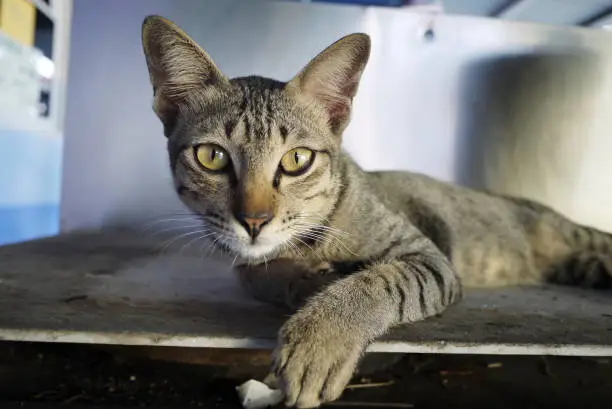
V. Suitability of Sokoke Cats :
Compatibility with Children and Other Animals :
- Children: Sokoke cats are generally well-suited for families with children. They are playful, energetic, and enjoy interactive play sessions, making them great companions for kids. However, supervision is always recommended to ensure that both the cat and the children interact safely and respectfully.
- Other Animals: Sokoke cats can be compatible with other pets, including dogs and other cats, when properly introduced and socialized. They have a friendly and sociable nature, but introductions should be gradual to allow all animals to adjust to each other’s presence.
Special Considerations for Multi-Pet Households :
- Introduction Process: When introducing a Sokoke cat to an existing pet, it’s important to proceed slowly and carefully. Start with scent swapping by exchanging bedding or toys between the animals. Then, gradually introduce them in a controlled environment, such as separate rooms with a barrier in between, allowing them to become familiar with each other’s scent and presence before direct interaction.
- Observation and Patience: Monitor their interactions closely during the initial stages and be prepared to intervene if any signs of aggression or stress arise. It may take time for the animals to adjust to each other, so patience and consistency are key.
Environmental Needs :
- Space: Sokoke cats appreciate having ample space to explore and climb. Providing vertical spaces, such as cat trees or shelves, allows them to satisfy their natural instincts and provide opportunities for exercise and enrichment.
- Special Environment: While they can adapt to various living environments, Sokoke cats may thrive in homes with access to outdoor spaces or enclosed outdoor enclosures (catios) where they can safely enjoy the sights and smells of the outdoors.
- Temperature: Sokoke cats are generally comfortable in moderate indoor temperatures. Ensure they have access to sheltered areas and cozy bedding during colder months, and avoid exposing them to extreme heat or cold. Providing a comfortable indoor environment year-round is essential for their well-being.
By considering the compatibility of Sokoke cats with children and other pets, providing guidance for introducing them to existing pets, and addressing their environmental needs, owners can create a harmonious living environment where their Sokoke cat thrives as a valued member of the family.
VI. Adoption and Breeder Consideration of Sokoke Cat Breed :
Adoption from Shelters or Rescue Organizations :
- Encouragement: Adoption from shelters or rescue organizations is highly encouraged for those considering adding a Sokoke cat to their family.
- Benefits:
- Saving Lives: By adopting from shelters, you are giving a cat in need a loving home and a second chance at life.
- Health and Socialization: Many shelter cats are already spayed/neutered, vaccinated, and microchipped, saving you time and money on these procedures. Additionally, shelter staff can provide valuable insights into a cat’s temperament and behavior.
- Supporting Rescue Efforts: Your adoption fee helps support the shelter’s ongoing rescue efforts and care for other animals in need.
Selecting a Reputable Breeder :
- Guidance on Selection: If purchasing a purebred Sokoke cat from a breeder, it’s essential to choose a reputable one.
- Importance of Ethical Practices:
- Health and Well-being: Reputable breeders prioritize the health and well-being of their cats, adhering to ethical breeding practices and standards.
- Health Screenings: They conduct health screenings for genetic conditions common in the breed, such as hip dysplasia and heart disease, to ensure the health of their kittens.
- Research and Communication: Research potential breeders thoroughly, asking questions about their breeding practices, health screenings, and the care provided to their cats and kittens. Visit their facilities if possible to assess the conditions firsthand.
Cost Considerations and Adoption Fees :
- Adoption Fees: Adoption fees for Sokoke cats from shelters or rescue organizations typically range from $50 to $200, depending on factors such as the organization, the cat’s age, health, and background. These fees often cover vaccinations, spaying/neutering, microchipping, and other initial veterinary care.
- Breeder Costs: Purchasing a Sokoke cat from a reputable breeder can cost anywhere from $500 to $2000 or more, depending on factors such as the cat’s pedigree, health, and quality. Be prepared for additional expenses such as transportation, initial veterinary exams, and supplies.
- Financial Preparation: Consider the financial aspects of adopting or purchasing a cat breed, including ongoing expenses such as food, grooming, veterinary care, and supplies. Budget accordingly to ensure you can provide for your Sokoke cat’s needs throughout their lifetime.
By considering adoption from shelters or rescue organizations, selecting a reputable breeder with ethical breeding practices, and understanding the cost considerations associated with adopting or purchasing a Sokoke cat, prospective owners can make informed decisions that benefit both them and the cat in need of a loving home.

VII. Conclusion
In conclusion, the Sokoke cat breed is a captivating and unique feline companion known for its striking appearance, energetic personality, and affectionate nature. Throughout this blog post, we’ve explored the defining characteristics and temperament of the Sokoke breed, highlighting their medium-sized build, short and sleek coat with marbled tabby patterns, and their playful and sociable demeanor. From their origins in the coastal forests of Kenya to their adaptability to various living environments, Sokoke cats bring a blend of wild beauty and domestic charm to any household.
However, alongside the joys of Sokoke cat ownership comes a responsibility to provide proper care and responsible stewardship. It’s essential for prospective owners to consider all aspects of Sokoke cat ownership, including grooming needs, exercise requirements, and potential health considerations. Whether adopting from shelters or purchasing from reputable breeders, choosing a Sokoke cat is a commitment to providing a loving and nurturing home for these remarkable feline companions.
In closing, responsible ownership and proper care are paramount in ensuring the health and well-being of Sokoke cats. By understanding their unique needs and temperament, prospective owners can embark on a rewarding journey of companionship with these captivating and cherished feline friends.
FAQ about Sokoke Cat Breed :
What is the lifespan of Sokoke cats?
On average, Sokoke cats have a lifespan of 12-15 years, provided they receive proper care and veterinary attention. With a healthy lifestyle and regular veterinary check-ups, they can live even longer.
Where can I adopt a Sokoke cat?
Sokoke cats may be available for adoption from shelters or rescue organizations that specialize in purebred cats. Alternatively, you can contact reputable breeders who specialize in Sokoke cats for adoption or purchase.
Are Sokoke cats suitable for apartment living?
While Sokoke cats can adapt to apartment living, they thrive in environments with ample space to explore and climb. Providing vertical spaces and opportunities for play and exercise is important for their well-being.
Are Sokoke cats good with children and other pets?
Yes, Sokoke cats are generally good with children and other pets when properly socialized. They enjoy the company of their family members and can get along well with other cats and dogs.



